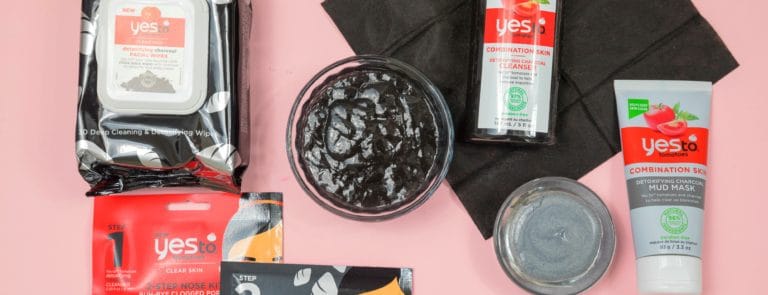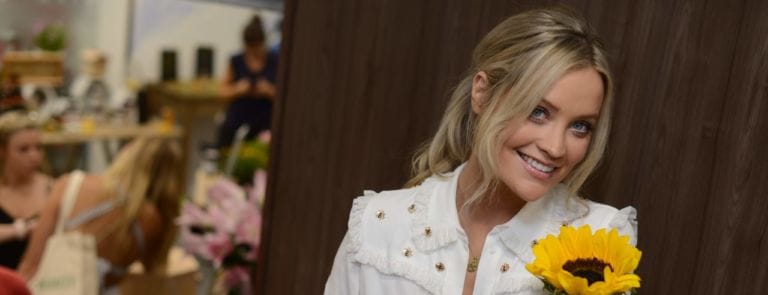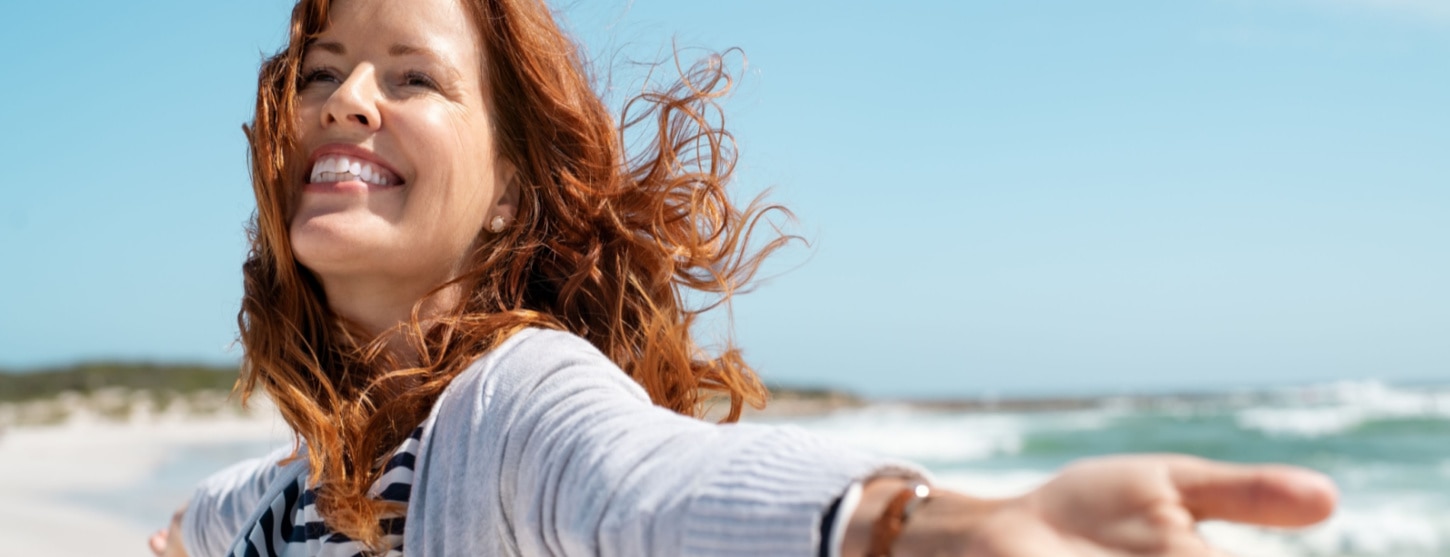15% off €35 or 20% off €45
Code:SUMMER
Back acne: what is bacne and why have I got it?

Getting spots in summer? ‘Bacne’ can make an appearance or get worse when it’s hot outside. Find out why this might happen and you can manage it
Summary
1What is bacne?
It’s a slang term for spots on your back. Whether it’s the occasional zit or something more frequent, it's generally nothing to worry about...
2What causes back acne?
Just like the spots you get on your face, there’s no individual reason for back acne...
3Tips for dealing with bacne
To help get rid of bacne, try to: shower straight after exercise with a quality body wash or shower gel...
Hot weather’s the time for sunshine, sand... and sweat, sweat, sweat.
For many of us, this can mean new breakouts, including ‘bacne’ (yes, that’s right – acne on your back). Some people use this term for the kind of back spots that only come up occasionally, especially in warm weather.
Acne itself is a common skin condition that affects most people – about 95% of us get spots at some point.1 Still, it can be frustrating. Fortunately, there are treatments available which you can talk to your pharmacist or GP about.
There are also simple ways to help manage seasonal spots. Let’s find out how summer might increase bacne and what you can do about it...
What is bacne?
It’s a slang term for spots on your back. You might think of acne typically affecting your face, but it can appear anywhere, most commonly your face, back and chest.
Whether it’s the occasional zit or something more frequent, bacne is generally nothing to worry about – although if you do have moderate or severe acne, or you develop nodes or cysts, you should speak to your GP for help.
According to the NHS, more than half of people with acne get it on their back too.2
What causes back acne?
Just like the spots you get on your face, there’s no individual reason for back acne.
Spots happen when tiny holes in the skin get blocked with sebum (our skin’s natural oil) and get infected.3 The face, chest and back are the most common areas to see spots pop up.2
There are different reasons you might get spots on your back, like: 3,4
- changes inside your body, such as hormones, stress, and puberty
- things that touch your skin (clothes, washing powders, sweat, or skincare products)
- genetics
- certain medical conditions, particularly endocrine disorders like polycystic ovarian syndrome (PCOS)

Is bacne worse in summer?
No, bacne isn’t necessarily worse in summer.
However, your lifestyle could change some things. For example, you might sweat more or wash more often, which could upset your skin.
It could even be something as simple as wearing a backpack for long periods to enjoy a summer hike, so make sure you take breaks and wear loose clothing. Or get someone else to carry it... SPF (sun cream) is another potential trigger for blocking pores. But don’t avoid it!
Be aware that certain skin treatments (like retinoids or benzoyl peroxide) can increase your sensitivity to sunlight too.5
Instead, choose lightweight and oil-free lotions or sprays.
First, make sure it’s not something else...
There are a few skin conditions that are easily mistaken for bacne. They can be more common in summer too.
Heat rash causes small spots and itching. Some spots may be filled with fluid, which could make them look like bacne – but heat rash usually goes away after a few days.6
Shaving rash, or razor burn, is caused by ingrown hairs that inflame the skin.7 If you're shaving more in hot weather, take care to look after your skin by exfoliating beforehand, using sharp razors, and using a non-comedogenic (non-pore-clogging) moisturiser afterwards.
Tips for dealing with bacne
To help get rid of bacne, try to: 2,8
- shower straight after exercise with a quality body wash or shower gel
- carry a change of clothes in hot weather, or when you think you’ll sweat a lot
- wear sweat-wicking clothing during exercise
- don’t pick! As tempting as it may be, it could lead to scarring, inflammation or infection
- keep long hair clean and off your skin
- wash with lukewarm water and a mild soap or cleanser
- don’t wash too much (up to twice a day is OK) as this can cause skin irritation
- look for non-comedogenic and oil free skincare products: this means they’re designed not to clog the skin
It might seem daunting if you’re self-conscious, but exposing your (SPF-covered) skin could also help to minimise sweat in hot weather. We say be loud and proud, just like the growing number of influencers showing their ‘blemished’ skin on social media.
Getting medical help
First, try treating your spots at home with help from a pharmacist if needs be. But see a GP if your back acne is painful or isn’t going away.8
They might offer you a prescription-only acne treatment such as:8
- topical retinoids, a form of vitamin A
- antibiotics (as a gel you apply to your skin)
- creams containing benzoyl peroxide, an antiseptic which kills spot-causing bacteria 5
- antibiotic tablets – sometimes used with topical antibiotics for very bad cases of acne
- azelaic acid – if benzoyl peroxide or retinoids don’t work, or if their side effects are severe
- the combined oral contraceptive pill – the hormones help to improve skin for some women
The final say
Don’t let bacne – or even bacne scars – stop you from staying sun safe or enjoying summer to the fullest.
Spots affect many different parts of the body, but there's nothing to be ashamed about. If anything, getting it out in the air can help minimise sweat buildup.
So try these methods or talk to your GP about your options. But whatever you do, don’t be shy this summer – be sure to wear what you want, when you want.
The advice in this article is for information only and should not replace medical care. Please check with your GP or healthcare professional before trying any supplements, treatments or remedies.
Food supplements must not be used as a substitute for a varied and balanced diet and a healthy lifestyle.
If you have sensitive skin, eczema, psoriasis, acne or rosacea, consult a dermatologist before trying any treatments.
- National Institute for Health and Care Excellence (NICE). Acne vulgaris: How common is it? [Internet]. NICE [reviewed 2023 Nov; cited 2024 Jul 9]. Available from: https://cks.nice.org.uk/topics/acne-vulgaris/background-information/prevalence/
- NHS. Overview - Acne [Internet]. NHS [reviewed 2023 Jan 3; cited 2024 Jul 9]. Available from: https://www.nhs.uk/conditions/acne/
- NHS. Causes - Acne [Internet]. NHS [reviewed 2023 Jan 3; cited 2024 Jul 9]. Available from: https://www.nhs.uk/conditions/acne/causes/
- Lolis MS, Bowe WP, Shalita AR. Acne and systemic disease. Med Clin North Am. [Internet]. 2009 Nov [cited 2024 Jul 9]; 93(6): 1161-81. Available from: https://pubmed.ncbi.nlm.nih.gov/19932324/
- NHS. Treatment - Acne [Internet]. NHS [reviewed 2023 Jan 3; cited 2024 Jul 9]. Available from: https://www.nhs.uk/conditions/acne/treatment/
- NHS. Heat rash (prickly heat) [Internet]. NHS [reviewed 2024 May 9; cited 2024 Jul 9]. Available from: https://www.nhs.uk/conditions/heat-rash-prickly-heat/
- British Association of Dermatologists (BAD). Pseudofolliculitis [Internet]. BAD [reviewed 2021 Jan; cited 2024 Jul 9]. Available from: https://www.bad.org.uk/pils/pseudofolliculitis/
- American Academy of Dermatology (AAD). Acne: Tips for Managing [Internet]. AAD [reviewed 22 Nov 16; cited 2024 Jul 9]. Available from: https://www.aad.org/public/diseases/acne/skin-care/tips




